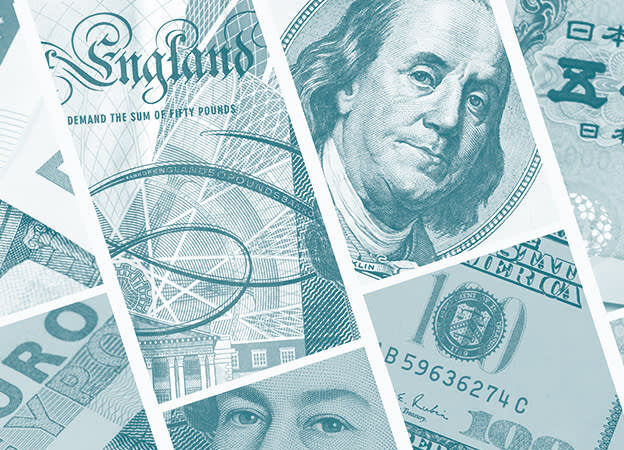
China and Saudi Arabia continue to cosy up on the trade front. Theoretically that could spell trouble for the reserve status of the US dollar – and, by extension, US stock market valuations – although a decisive move away from the greenback seems as remote a prospect as ever.
The two countries have initiated a three-year, 50bn yuan (£5.56bn) currency swap deal, which is designed to promote non-dollar denominated trade flows. It’s a relatively modest arrangement when you consider that trade between the two countries was worth more than $106bn (£84bn) in 2022. And for the moment it is primarily aimed at non-oil trade.
It is a little over a decade since China supplanted the US as Saudi Arabia’s biggest trading partner and that status has been cemented in the intervening period, so the currency swap deal also needs to be seen in that context. It is also the latest in a series of bilateral trade arrangements that have been put in place as geopolitical tensions have intensified in recent years, the usual prerequisite for criticism of the disproportionate influence of the dollar.
Russia has been forced to conduct more of its energy deals in yuan and other currencies in response to the sanctions imposed following its invasion of Ukraine. The sanctions also constricted Russia’s access to its dollar reserves; a move some analysts believed would precipitate a wider shift away from the US currency, although analysis from the Bank for International Settlements shows that the dollar was used in about 88 per cent of global foreign exchange transactions in 2022.
At any rate, the US is not alone when it comes to turning the screw with regards to trade; China certainly isn’t averse to the use of sanctions, and Beijing has been heavily criticised for its habit of leveraging regional political power through loading up developing nations with unsustainable levels of debt. The country’s Belt and Road Initiative has as much to do with establishing interdependent relationships with the Chinese economy as it does with developing critical infrastructure for trade purposes. Empires like nothing more than client states.
That Saudi Arabia is forging ever closer trading links with China is unsurprising given that the latter nation is the largest buyer of crude oil in the world. Beijing’s ambition to decouple from the petrodollar is reflected in its attempts to bolster the influence of the Shanghai Petroleum and Natural Gas Exchange. It may also be at the heart of plans to establish the digital yuan (the e-yuan) as the preferred dollar alternative. Indeed, in late October, PetroChina International settled its first cross-border trade in China’s digital currency on the Shanghai exchange. Several other cross-border natural gas trades have since been settled in e-yuan, although as we are not privy to the identity of the counterparties it would be unwise to take the story at face value.
It’s difficult to say what impact currency digitalisation will have on global trade flows or settlements, but there is a major structural barrier to China exerting the kind of influence enjoyed by the US. The country’s financial system, though massive in scale, remains relatively closed. If anything, the concentration of regulatory and supervisory power has intensified in the wake of the country’s property and shadow banking crises. Beijing has established a new “super regulator” – The Central Financial Commission – in a bid to de-risk its financial system, but critics of the move fear that it will increase interventionism in capital and credit markets, hamstringing the economy in the process.
The effective de-liberalisation in prospect may be understandable when you consider – among other issues – the vast extent of the country’s municipal off-balance-sheet debt, but it won’t play well with any central bankers considering allocating to non-dollar currencies. It’s worth noting that the periodically beleaguered euro has fared better as an alternative reserve currency than the yuan and now comprises just over a fifth of global reserves.
Some might argue that US dollar primacy could eventually be imperilled if the nation’s share of global trade continues to contract, while others would point to the country’s deteriorating fiscal position. We shouldn’t forget that sterling’s century-long reign as the principal global reserve currency ended within two decades from the early 1950s, falling from 60 per cent to just 5 per cent of central bank reserves. Yet the impact on stock market valuations – if any – is difficult to discern, at least according to analysis from Global Financial Data. By the end of the second world war, UK market capitalisation was broadly in line with gross domestic production. By 1974 that proportion had dropped to 30 per cent, but by the end of the century the rate had recovered to 190 per cent. The stock exchange clearly has many levers beyond the issue of currency reserves.



